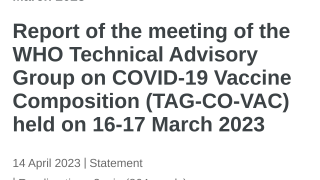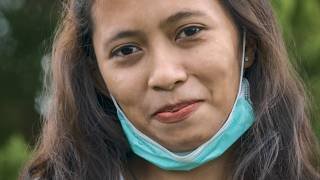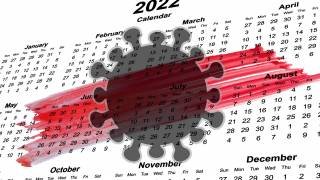Masking Returns as COVID-19 Departs

The World Health Organization (WHO) recently updated its guidelines on mask-wearing in community settings, during COVID-19 treatments, and in clinical management.
The WHO reaffirmed on January 13, 2023, that masks continue to be a vital tool during the COVID-19 pandemic and continue recommending the use of masks by the public in specific situations.
Masks are recommended following recent exposure to COVID-19 when someone has or suspects they have COVID-19, when someone is at high risk of severe COVID-19, and for anyone in a crowded, enclosed, or poorly ventilated space.
The WHO did not update mask use recommendations when a person is outdoors or in open-air situations.
The U.S. National Institutes of Health says wearing face masks can trap fluid droplets that exit the mouth while you're speaking, reducing the potential spreading of airborne viruses such as influenza and the SARS-CoV-2 coronavirus.
And this WHO update recommends their use irrespective of the local epidemiological situation. Previously, WHO recommendations were based on the epidemiological situation.
As of January 19, 2023, the WHO's Update Edition #126 reported nearly 2.8 million new cases, and over 13,000 related fatalities were reported in early January 2023.
While this new WHO data indicates the pandemic is ongoing, the monthly trends reflect a steady decrease in certain regions.
At the regional level, the number of newly reported weekly cases decreased or remained stable across five of the WHO regions: the African Region (-40%), the European Region (-35%), the South-East Asia Region (-17%), the Region of the Americas (-12%), and the Western Pacific Region.
Additionally, the WHO announced reduced isolation periods for COVID-19 patients.
Isolation of people with COVID-19 is essential in preventing others from being infected. This can be done at home or a dedicated facility, such as a hospital or clinic, says the WHO.
For patients with symptoms, the new guidelines suggest ten days of isolation from the date of symptom onset.
Previously, WHO advised that patients be discharged ten days after symptom onset, plus at least three additional days since their symptoms had resolved.
And for those who test positive for COVID-19 but do not have any signs or symptoms, the WHO now suggests five days of isolation compared to ten days previously.
However, COVID-19 patients can be discharged from isolation early if they test negative on an antigen-based rapid test, says the WHO.
In the U.S., the peer-review journal Annals of Internation Medicines published in September 2022, its eighth update for a living rapid review on the use of masks to prevent respiratory virus infections, including SARS-CoV-2. This update confirmed the clinical evidence on the benefits of mask use when outside remains insufficient and inadequate.











_0.jpg)

.jpg)


.jpg)






.jpg)